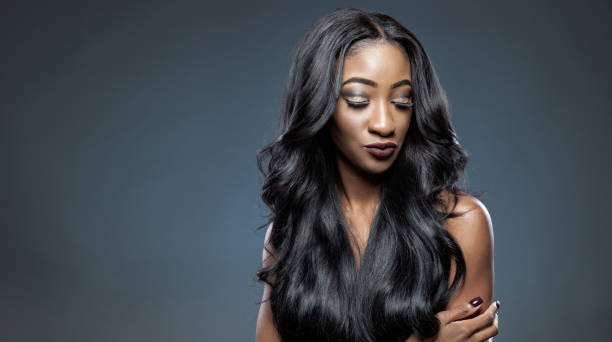Wigs offer a great choice for those who love to make a fashion statement, suffer from hair loss or require convenience in their daily routines. Today’s wigs have originate a long way from their heavy predecessors. Modern technology has delivered light, comfortable in natural looking colors and styles. Wigs variety in price from under $100 to thousands. Before investing in a wig, take into concern the following.

Hair Fiber:
Wigs may be made from synthetic fibers or human hair, and both have benefits and shortcomings. Synthetic wigs come pre-cut and pre-styled and need little to no styling. They’re simple to maintain, hold their shape, dry fast and price less than human hair wigs. You can’t use a blow dryer, iron or hot rollers on synthetic wigs, so styling choices are limited. Human hair wigs provide styling versatility and can be heat styled, colored and permed. They require the same care you give to your natural hair and require more upkeep than synthetic wigs.
Wig Color:
Wig shades mirror our natural hair and involve darker roots, lighter ends and highlights. When selecting the right shade, you want to find harmony between hair color, eye color and your complexion. You can do this by picking your wig shade based on whether you have a warm or cool skin tone. Wigs in golden brown, honey brown, chestnut, copper, aubum and warm shades of gray accompaniment a warm skin tone. Ashe blonde, platinum blond, brown, burgundy, dark brown and black work with cool skin tones.
Face Shape:
Your face shape can assist you decide what wig length, texture and style will flatter you most. If you have an oval face shape, you can wear all length or style. Round faces look best with chin-length or longer styles with completeness and height in the crown and off-center parts. For square faces, pick a style with fullness in the crown that lengthens the face. If you have a rectangular face shape, try short to medium styles with completeness at the sides and wispy bangs. Heart-shaped faces look fine with chin-length and longer styles, side parts, wispy bangs and layers around the face. If you’re not sure about choosing the right wig style, consult your hairdresser. Once you buy the wig, he can cut and customize it to better enhance your features.
Shoulder-length hair
Many men have been having lengthy hair over the past few months and this trend is expected to go on until 2022. According to hair stylists and grooming specialist, men are able to maintain their hair in good condition for a long time since they don’t fiddle with it like women. If you decide to go for long hair, you should make sure that you visit your barber regularly for regular trims. You should also keep the hair clean and regularly use a finest conditioner.
City slicker:
This style needs you to have a good haircut. The sides and backs of the hair require to be shorter than the front. You can comb the hair or style it using your fingers or comb. For a exact look, you should wear a modern suit.
Top knot:
This is where you tie your hair at the back. To achieve the style you only require to brush your hair at the back with your fingers and then tie it into a ponytail or top knot. While this style can suit almost everyone, it looks fine on a rugged man with a beard.
Wig Cap:
Wig hair attachment to a base called the wig cap. Human hair wefts may be machine sewn, hand sewn or hand-tied to the cap. Most wigs have a machine-sewn standard cap that tends to be the least costly option. A capless style provides more ventilation for the wearer and makes the wig lightweight and cool. Monofilament caps feature hair hand-tied to a soft micromesh that both looks natural and provide comfort to those with sensitive scalps.If you want high quality invisiable natural looking wigs,a HD lace wig may be a good choice.How hd lace wigs can change your life, visit unicehair .
Head Measurement
To make sure comfort, you require to find the right fit. Wigs typically come in four sizes, ultra petite, petite, average and large, but not all makers follow this size standards. You’ll require to take three measurements of your head with a cloth measuring tape to find your size. First, measure around your head begins at you front hairline, going over your ear, around the bend in your neck and up above your other ear to the begining point.
Next, measure front to back begining at your front hairline and going back over your crown to then nape of your neck. At last, measure ear to ear starting at the hairline in front of one ear and going up over the crown to the front of your other ear. Once you have your measurements, compare them to the manufacturers’ sizing charts for the exact fit.
Leave a Reply